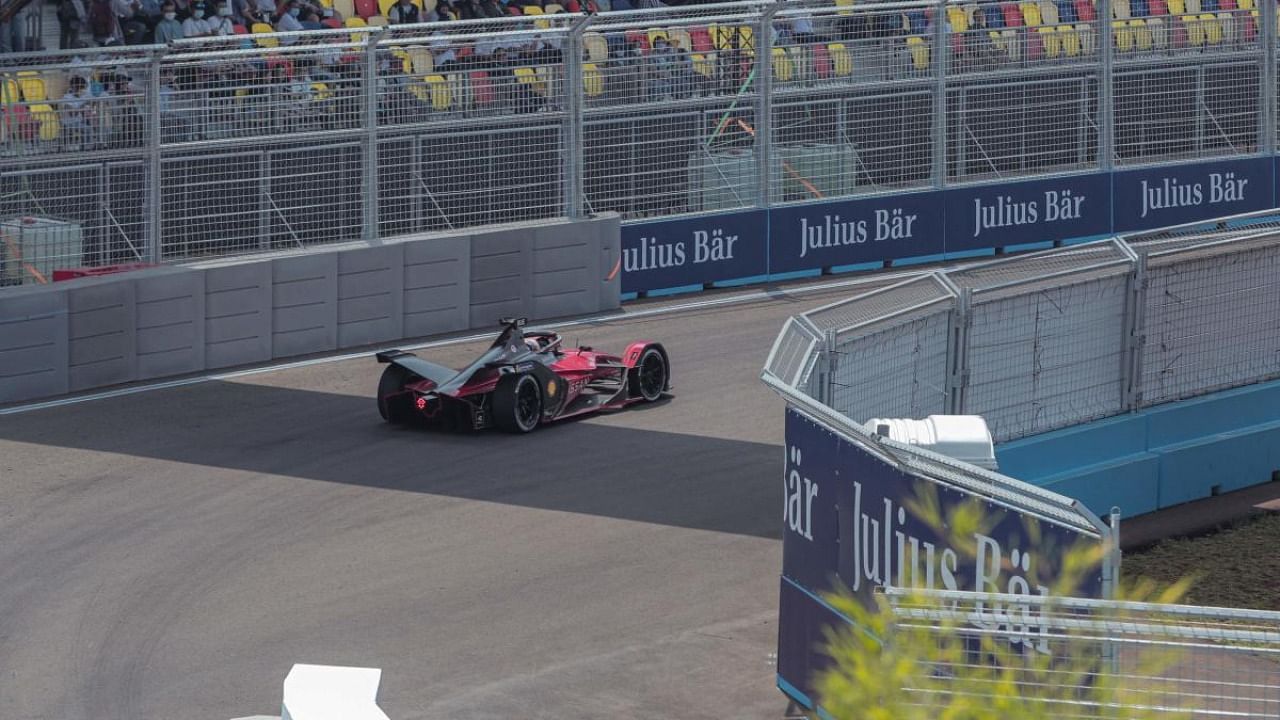
Formula E's entry into India next year will mark the return of a major motorsport event in the country and the development has already started to draw an 'unfair' comparison with the Formula 1 cars that last raced on the outskirts of the national capital in 2013.
Vicky Chandhok, who was heading the India motorsports federation when Formula 1 cars vroomed at the Buddh International Circuit for three seasons, aptly sums up the similarities (or the lack of) between the 'pinnacle of motor racing' and Formula E, an all electric racing series that has made rapid strides since its debut season in 2014.
"There is nothing common in the two cars except four wheels, a steering wheel, a break pedal and a throttle. F1 is the pinnacle of motorsport and after that comes Formula 2 and Formula 3 (both F1 feeder series) in terms of performance.
"Formula 1 cars run on internal combustion engine and you can't compare to an electric motor used in Formula E. Having said that, Formula E coming to India is fantastic as it puts us back on the world motorsport map," Chandhok told PTI.
In terms of speed, scale, budget, popularity, there is simply no comparison between the two FIA sanctioned World Championships, one a 72-year-old series and the other only eight years old.
With electric cars expected to fill public roads over the next 10-15 years, Formula E is 'racing with a purpose' while Formula 1 is the epitome of performance.
When it comes to top race speed, the turbocharged Formula 1 machines can touch speeds in excess of 360kmph while the Gen 3 Formula 2 cars, which will be introduced next year, can go up to 320 kmph.
The current Formula E cars have maximum speed of 280 kmph. Besides that, there is a huge difference in cornering speeds as well.
A Formula E car is designed to race on street circuits around the world with focus on sustainability than speed.
The inaugural race in Hyderabad is scheduled for February 11, joining the likes of New York, London and Rome on the Formula E calendar.
Viewership
With Liberty Media taking over the ownership of Formula 1 in 2017, the viewership numbers have seen a massive increase. With the 2021 season going right down to the last lap, more than 1.5 billion watched the epic title fight between Max Verstappen and Lewis Hamilton over the course of the 22-race season.
In contrast, Formula E reportedly drew 316 million viewers last year over a 17-race season. The series had seen a high of 419 million in the 2018-19 season before the pandemic hit the world.
Budget
The top Formula 1 teams used to spend in excess of USD 200 million in a season until budget cap was introduced which has limited the spending of all teams to USD 145 million.
On an average, a Formula E outfit spends around USD 15 million in an entire season. The low costs have attracted major auto manufactures, including Porsche, Mahindra, Nissan, Jaguar, and most recently, McLaren to test their electric programs.
"From a manufactures point of view, it is a fantastic series to compete with each other in identical chassis. We will get to see to see the Tata owned Jaguar and Mahindra racing against each other next year," said Chandhok.
Can a Formula E weekend lift Indian motorsport?
Chandhok, who as a racer and administrator has seen Indian motorsport for decades, has his doubts if one race can actually make a difference.
"From an event point of view, it will surely increase the awareness around motorsport in the country but I think it will just come and go. It won't give any boost to Indian motorsport," Chandhok reckoned.
'Formula E prepared for potential tax and bureaucratic hurdles'
More than the customs, it was the issue of taxation that had scared away Formula 1 from India nine years ago. The financial health of race promoter Jaypee Group also became a factor.
While the Formula E race is fully backed by the state government of Telangana, the series officials will also have to deal with the central government before their arrival.
"Those issues in Formula 1 were more related to tax. We have very good tax advisors, we know the challenges, we know the potential risks and liabilities that we have.
"We have done our homework on that front. If all goes to plan, I see a long term future for us in India," Formula E co-founder Alberto Longo had told PTI last month.
There is still a lack of clarity over whether Formula E teams will be taxed, but the single window for customs clearance should make the entry of equipment easier.
The state government and central government will also need to be on the same page for smooth conduct of the event.
"With the state government involved this time, there will be no messing around. When Formula 1 left India, custom clearance was the smallest of the problems. Notices from tax department to F1 teams, drivers and F1 itself scared them away.
"I hope the political differences of state and centre doesn't become a stumbling block. I vividly remember the Jaypee Group had to pay Rs 10 crore towards the National Sports Development every year to get the central government's approval. Once it became three days before the race.
"India will be hosting a Formula E race which is the newest technology of racing and we should be proud of that. It is going to give us global eyeballs," added Chandhok.